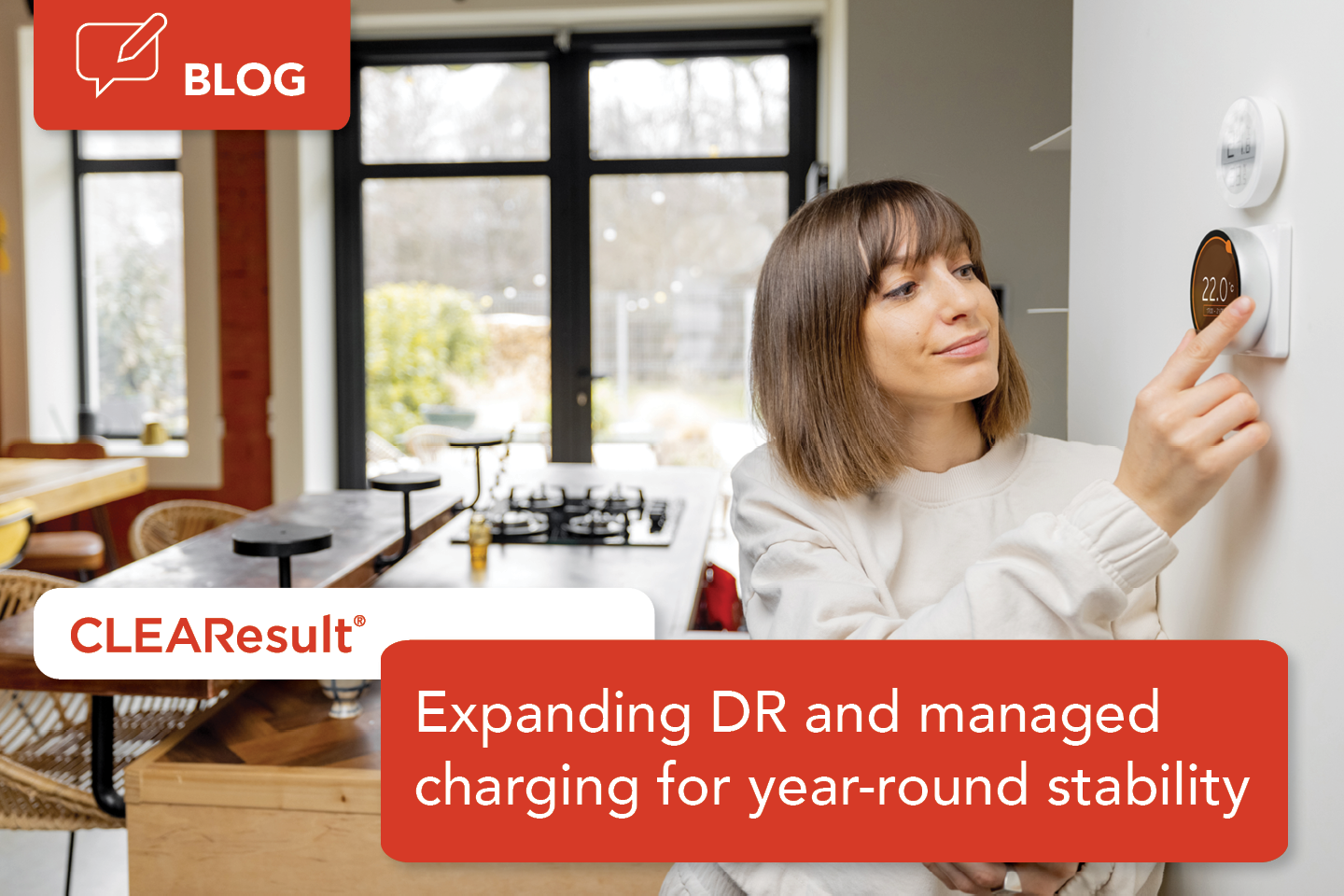Expanding demand response and managed charging for year-round grid stability

Climate-related events have exposed the vulnerability of the grid to an increasing number of demand surges throughout the year, not just during peak summer heatwaves. This is prompting many utilities to expand their use of demand response (DR) programs for better year-round grid stability.
Many of our clients traditionally focused their demand response programs on summer-only capacity. But with increasing extreme winter weather events, utilities are motivated to add a winter program to meet grid demands. Many other utilities with existing summer focused demand response programs are looking to add winter capability, and increasingly, new demand response programs are looking for all-season capacity.
The goal of demand response programs is to effectively manage electricity consumption during periods of high demand, supply constraints, and/or peak pricing. Engaging customers to understand the benefits of these programs is vital to their success, in any season. When DR events occur that ask consumers to reduce their electricity usage in response to high demand, supply constraints, or grid emergencies, but an insufficient number of participants are enrolled to make a significant impact on demand reduction, the DR event will not be successful.
Solutions
Demand response programs involving smart thermostats are the gateway to building a demand response model starting with summer participation, and opening the door to programs for monitoring, managing, and controlling other electrical-consuming devices in the home in all seasons. That said, while customers increasingly understand the benefits of smart thermostats, only about 6 percent of US customers are in a residential DR program, and the market for controlling other devices is still at an early stage. By combining both smart thermostats and other devices, customers unlock greater savings and utilities are better able to stabilize the grid.
In addition to thermostats and other home control devices, electric vehicles (EVs) and their chargers add a new flexible load to home energy use. Because EV charging is flexible, managed charging programs can greatly improve grid stability. Customers can be rewarded for charging during off-peak hours, making the grid more efficient. They can also save on charging costs with time-of-use rates and gain more control over home charging.
Managed charging programs work largely by incentivizing off-peak charging. Once a charger is connected, both the customer and utility can monitor and optimize charging behavior. However, customer engagement is crucial. Programs may fail if communication is unclear, and customers don't understand program details. Utilities should clearly explain and provide details about charger compatibility, telematics, Wi-Fi connectivity and battery status to encourage participation.
Take action
To fully benefit from distributed energy resource (DERs) management programs such as DR and managed charging. Utilities must move from a purely technology-centric approach to a customer-focused dialogue, listening to customers, designing and implementing programs that are user-friendly and demonstrate their value to the end user. Collaboration is key within the organization itself, with DERs program teams, operations teams, and other stakeholders within a utility working to incorporate demand-side resources more directly into their regular operations, curtailing end customer loads during peaks integrating on-site generation and load control into all-hours of operations. Solid coordination and collaboration across a utility makes this possible.